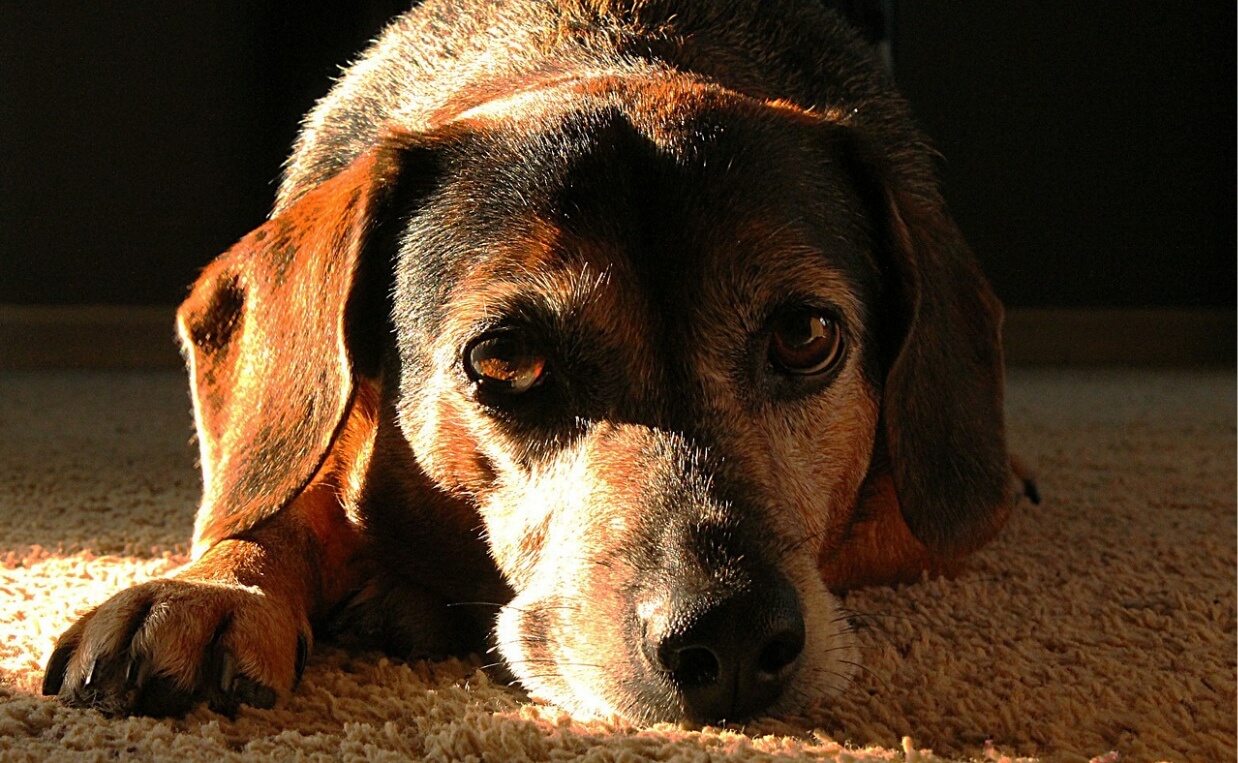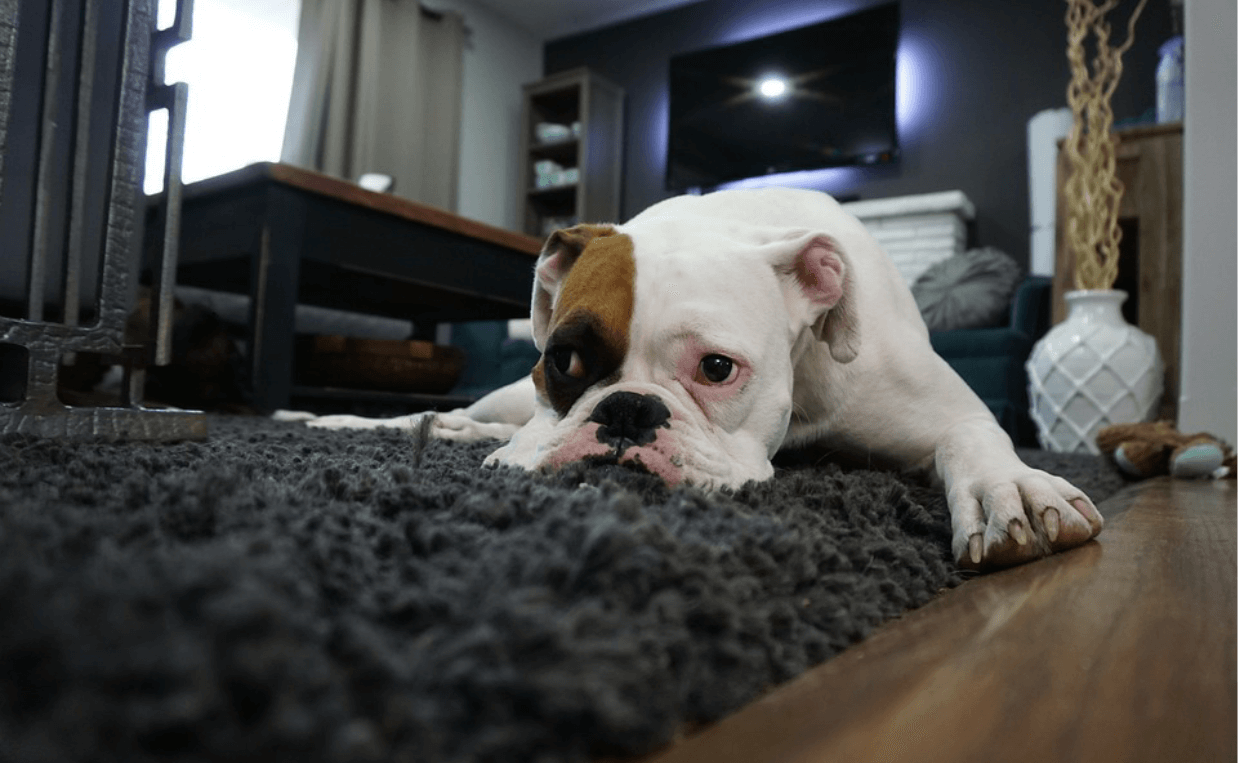
Seasonal depression, also known as Seasonal Affective Disorder (SAD), affects approximately 10 million adults in the U.S. You may have heard of this type of depression and wouldn’t wish it on anyone, especially your pooch! But wait, is SAD something you should be concerned about as a dog parent? Can dogs get seasonal depression?
It turns out, yes, they probably can. In fact, it’s pretty common. About one-third of pet parents report seeing a change in their dog’s mental state and energy level during the winter. Considering there are about 90 million pet dogs in the U.S., that equates to about 30 million in total, which would suggest SAD is quite common in dogs.
Here’s what every dog parent needs to know about seasonal depression in dogs, including the signs, when to call the vet, and how to help your dog feel better.
What is Seasonal Affective Disorder and What Causes It?
In people, Seasonal Affective Disorder is a type of depression correlated with the winter months primarily, although some people do have it in the spring and even summer months.
While the exact cause is not known, it does seem to be caused by changes in sunlight, sleep patterns and shifting levels of melatonin. Melatonin is a chemical in our body that affects our sleep.
Treatments for SAD in humans include using special lights to counter decreases in sunlight, medication, and/or cognitive behavioral therapy.

Signs of Seasonal Depression in Dogs
While there isn’t much research about seasonal depression in dogs, experts and pet parents think humans and their fur buddies are impacted in similar ways.
For example, if you notice your dog becoming sleepier and more lethargic during the winter months, shifting melatonin levels and SAD may be the culprit.
Here are the most common symptoms of canine SAD:
- Less energy and more lethargy
- Changes in eating, such as loss of appetite or weight gain
- Changes in behavior, such as overgrooming or excessive vocalizations
- A significant time spent sleeping
If your dog is gaining weight, this can be a real health problem. It’s important you nip this in the bud before your dog develops serious health issues such as respiratory problems, high blood pressure, diabetes, liver disease, osteoarthritis or compromised immune function. Read more: 7 Dangers of Obesity in Dogs
When to Call Your Vet
Anytime you’re concerned about your dog’s behavior, it’s a good rule of thumb to call your vet just to be sure something serious isn’t going on. Any of the symptoms listed above could be caused by any number of factors, so you’ll want to get to the bottom of it as soon as possible.
Diagnosing SAD in dogs can be tricky because dogs can’t tell us how they’re feeling. But don’t despair, your vet will listen to your concerns, examine your dog and, if necessary, suggest treatment.
Whether SAD is to blame or not, mood and behavior changes are very real and need to be addressed.

Treatments for Seasonal Affective Disorder in Dogs
While treating seasonal depression in humans usually includes therapy and medication, treating your dog’s SAD usually means making some simple lifestyle changes and supplements.
-
Keep your home well-lit
Open your blinds during the day and turn on lights in rooms where your dog hangs out during the day
-
Spend more time outside
Even though it gets colder in the winter, try to get outdoors at least some time during the day. The change of scenery, fresh air, natural light and movement are good for your dog – and for you as well! So throw on a coat, put some paw wax or boots on your pup, and get out there!
-
Ask your vet about a supplement
Some veterinarians recommend supplements for dogs experiencing SAD, such as an omega-3 supplement with fish oil, and a muscle formula supplement to keep your dog’s muscles well-toned if they’re getting less exercise. Don’t give your dog any supplements without checking with your vet first.

-
Spend more time with your dog
Spending one-on-one quality time with your dog indoors can help keep your dog’s spirits up.
Here are some ideas to get you started:
- Play a game. Here are 10 fun games to play with your pup
- Stream a dog-friendly movie. Check out my dog-themed recommendations here
- Bake some dog treats. Here are some Homemade Dog Treat recipes
- Challenge your dog with some brain exercises
- Set up an indoor agility course. You may want to purchase a tunnel and other parts of an agility course, or make one yourself
- Plan a digital detox weekend. When you disconnect from technology, you end up spending more time with your dog
-
Bring your dog to daycare
Dog daycare provides your dog with the physical activity, socialization and supervision they need. Dog daycare alleviates boredom and loneliness, and can offer a safe, interactive and fun environment.
Final Thoughts
It’s easy to worry about your dog if they aren’t acting like themselves. If you suspect your dog has had seasonal depression in the past, you may want to take some preventative steps in your home now before the days start to get even shorter. Spend more time with your dog and don’t hesitate to keep your vet in the loop if you feel your dog needs help.
Do you think your dog gets Seasonal Affective Disorder? What precautions or treatment have you used to help your dog feel better? Please comment below…


 Pancreatitis in Dogs – Symptoms, Causes and Treatment
Pancreatitis in Dogs – Symptoms, Causes and Treatment Does Acupuncture for Dogs Really Work?
Does Acupuncture for Dogs Really Work? How to Choose the Best Dog Bed for Your Dog
How to Choose the Best Dog Bed for Your Dog Is Nutmeg Safe for Dogs to Eat?
Is Nutmeg Safe for Dogs to Eat? How to Help Your Dog Get Rid of Dandruff
How to Help Your Dog Get Rid of Dandruff






Leave a Reply